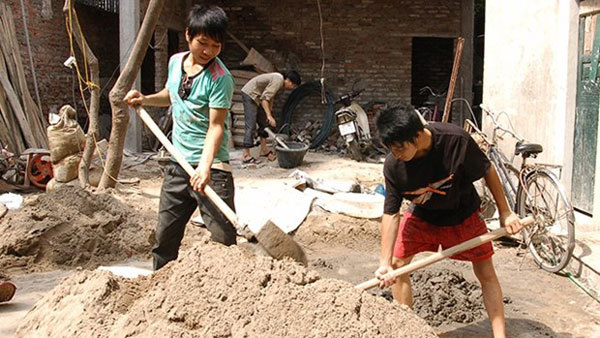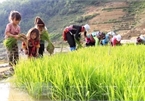 |
| Children at work. Photo nhandan.vn |
Approved by the Prime Minister through Decision No 782/QĐ - TTg on 27 May 2021, the programme was developed and launched by the Ministry of Labour, Invalids and Social Affairs (MOLISA) in collaboration with related departments and ministries, with technical support from the International Labour Organisation (ILO) and the United Nations Children Fund (UNICEF).
With a long-term vision towards 2030, the programme has three core aims: to prevent and detect cases of child labour, and support and provide interventions for children engaged in and at risk of child labour; to raise awareness on child labour prevention and reduction; and to deliver training and capacity building on child labour prevention and reduction.
The content of the programme builds on the successes and lessons learned from the first National Child Labour Programme from 2016 ̶ 2020.
The first programme was coordinated and supported by a variety of ministries, sectors, provinces and international organisations, resulting in enhanced capacity to implement child labour prevention and reduction at all levels and multiple sectors, with targeted interventions and support provided to children and their families.
Moreover, the legal system on child labour has been strengthened, with child labour prevention and reduction rising on the policy agenda, resulting in the mobilisation of Party committees, authorities, ministries, mass organizations, businesses and society as a whole.
Through the launch of the second national child labour programme, the goal is to step up these efforts, in line with Vietnam’s commitments as a pathfinder country for Global Alliance 8.7 ̶ a multi-stakeholder partnership to eliminate child labour in line with the sustainable development goal to eliminate child labour.
According to ILO estimates, by 2020, 160 million children worldwide were participating in child labour. As a result of COVID-19, this figure is predicted to increase to 168.9 million by 2022.
In Việt Nam, according to the results of the 2018 National Child Labour Survey, 1,031,944 children aged 5-17 ̶ accounting for 5.4 per cent of children in this age group ̶ were in child labour.
The rate of child labour in Vietnam is almost two percentage points lower than the average Asia Pacific rate, and over 4 percentage points lower than the global average. However, as global estimates suggest, unless urgent action, these figures will rise as a result of the pandemic.
Addressing the launch event, ILO specialist Bharati Pflug emphasised the detrimental impact of child labour, noting that: “child labour not only posed reputational risks to Vietnam as an international trade partner and weakens the capacity of the future workforce of the country, it undermines the rights of children and reinforces cyclical poverty. Today’s launch demonstrates the strong political will of Vietnam’s leaders to secure a better future for future generations.”
“Vietnam has committed to comply with international labour standards, including the eradication of child labour, as required by new-generation Free Trade Agreements.
The implementation of the National Programme will ensure that this commitment is applied in practice, facilitating Vietnam’s full integration into the global economy; this is crucial to the country’s economic recovery from COVID-19”, she added.
In her remarks at the event, Nguyen Thi Ha, Deputy Minister of MOLISA, emphasised that "ministries, unions, localities and organisations must actively develop plans and solutions to better prevent and reduce child labour in line with their respective responsibilities. We must also continue to implement policies to support employees facing difficulties in the context of COVID-19, in line with Resolutions No 68 and No 126.”
Ha also stressed the need to connect the child labour programme with other target programmes, namely the National Programme on Poverty Reduction and Social Security; the National Programme on Sustainable Poverty Reduction; the National Programme on Rural Development; and the National Programme for Socio-economic Development in Ethnic Minority and Mountainous areas.
UNICEF Vietnam representative, Lesley Miller, said that child labour could be prevented through integrated approaches that simultaneously address poverty, deprivation and inequality, improve resilience and access to social protection services and quality education, and mobilise community support for respecting child rights.
“It is also important to promote regulations on working conditions for children of working age; promote social norms and public attitudes in opposition to child labour; incorporate child labour concerns into education plans; and push the private sector and civil society to act together to eliminate child labour,” she said.
Source: Vietnam News

Vietnam’s child labour rate 2 percentage points lower than region’s average: survey
Vietnam’s child labour rate is approximately 2 percentage points lower than the regional average for Asia and the Pacific, found the second national child labour survey, which was released on December 18.